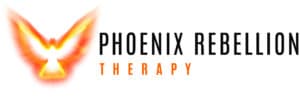What is Neurofeedback?
Neurofeedback (NFB) is a cutting-edge form of treatment, based on over 40 years of research, that involves training the brain to improve its own functioning. NFB is a safe, non-invasive and non-verbal treatment. NFB is not about having clients learn to relax. EEG sensors are used to pick up brain wave activity.
Immediate Neurofeedback appointments are available in our Kaysville office!

Neurofeedback FAQs
What is Neurofeedback?
Neurofeedback (NFB) is a cutting-edge form of treatment, based on over 40 years of research, that involves training the brain to improve its own functioning. NFB is a safe, non-invasive and non-verbal treatment. NFB is not about having clients learn to relax. EEG sensors are used to pick up brain wave activity. The brain then observes this activity, and through a method called Associative Learning, it then improves its own self-regulatory skills. Since self-regulation is a foundational skill of the brain, it naturally improves its own performance based on the feedback it gets on its own activity, in real time. NFB requires no effort on your part. It can be done with people of any age – but usually 17 years and older. It can also be used as a stand-alone treatment, or as part of a comprehensive treatment plan. Schedule an appointment or call and talk to one of our therapists today to find out if Neurofeedback is right for you.What is InfraLow Frequency Neurofeedback?
InfraLow Frequency Neurofeedback (ILF NFB) is a type of neurofeedback that focuses on extremely low frequency brain waves that control the core neuro-regulatory networks, including the Default Mode, Salience and the Executive Networks.
Default Mode Network: the parts of the brain that are active during rest or quiet wakefulness.
Salience Network: the parts of the brain that select which stimuli deserve our attention.
Executive Network: the parts of the brain responsible for tasks and decision making.
What are the impacts of Neurofeedback?
NFB has demonstrated the ability to alter brain functioning in positive directions without the feeling of sedation or constriction of the emotions. The impact of NFB is like steadily moving toward how you would function on one of your “good days”. NFB does not suppress your normal emotions, energy or creativity. It can open up possibilities that have before felt unreachable. NFB has been shown to have positive impacts on concentration/focus, sleep, mood, anxiety, pain, emotional regulation, impulse control, energy and social awareness.
What can I expect in Neurofeedback sessions?
We instruct our clients to not try to do anything beyond attending to the process. NFB is very engaging because the feedback is embedded within your choice of movies, and involves things like a movie expanding and shrinking, or a race car going faster and slower.
EEG sensors are used to pick up your brain wave activity. The brain then observes this activity, and through a method called Associative Learning, improves its own self-regulatory skills. Since self-regulation is a foundational skill of the brain, it naturally improves its own performance based on the feedback it gets from its own activity.
How do I know if Neurofeedback is right for me?
NFB is well suited for those who have a strong history of trauma. It is compassion-informed, non-judgmental, and non-triggering. NFB treatment can be used with any diagnosis.
NFB requires no effort on your part. It can be done with people of any age – but usually 17 years and older. It can also be used as a stand-alone treatment, or as part of a comprehensive treatment plan.
ILF NFB has also been implemented into a vast range of settings including veterans services, community mental health programs, special education services, substance abuse programs, foster care programs, programs for recently released prisoners, programs serving the homeless, drug courts, programs serving battered women, and domestic violence programs.
Schedule an appointment or call and talk to one of our therapists today to find out if Neurofeedback is right for you.
Resources
Neurofeedback Videos
Neurofeedback Studies
- EEG Info The Complete Neurofeedback Resource – ADHD & ADD
- EEG Info – PTSD (Post-Traumatic Stress Disorder) Research – neurofeedback, EEG Biofeedback, Review papers and studies
- EEG Info – Depression Research – neurofeedback, EEG Biofeedback, Review papers and studies
- EEG Info – Autism Research – Neurofeedback, EEG Biofeedback, Review papers and studies
25 Reasons for Neurofeedback
- It is a safe, non-invasive treatment.
- It has the demonstrated ability to alter brain functioning in positive directions without feeling sedated or constricting one’s feelings.
- It can impact concentration, sleep, mood, anxiety, pain, focus, emotional regulation, impulse control, energy and social awareness.
- It has been used to address PTSD, TBI, Depressive Disorders, Autism Spectrum Disorders, ADD/ADHD and substance abuse disorders.
- It works by engaging the brain’s own mechanisms of self-regulation.
- It is a “low bar” (low barrier) treatment that requires no effort on the part of the client.
- It is well suited to non-responders and resistant clients.
- It relies on the client’s own choice of concerns as the metric to measure treatment progress.
- It is well suited for use with clients with a strong history of trauma. It is compassion-informed, non-judgmental and non-triggering.
- It can be done with clients of any age, from young children to the elderly.
- It can be used with extremely wary clients as it requires no self-disclosure. Yet it can be readily integrated into talk therapy.
- It has demonstrated its effectiveness with the underserved and marginalized communities.
- It can be either a stand alone or adjunctive treatment as part of a comprehensive treatment program.
- It is the first scalable behavioral treatment for our health care system.
- It can be used with client populations who typically are resistant to talk therapies.
- It has been used with clients from a wide-range of cultures including Iraqi, Congolese and Tibetan refugees, native-Americans and in Asian, Middle Eastern and Latin American countries.
- It is very engaging as the client choses from movies, YouTube, Netflix and video games as the source for the feedback.
- It is a cutting-edge development within one of the most exciting areas of neuroscience: the plasticity of neural networks and their impact on mental and physical well-being.
- It is based on over 40 years of research and thousands of published research papers.
- It can be used within our existing system of service providers.
- Professionals and paraprofessionals in mental health can be trained in as little as 5 days to competently conduct this treatment.
- Supervision to insure program adherence and effectiveness can be conducted at a distance and at little to no cost.
- The costs of equipment are minimal compared to the cost of most medical equipment.
- Neurofeedback is an existing therapy within the healthcare reimbursement system.
- We have demonstrated that it can be successfully implemented in real world settings.

